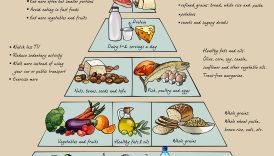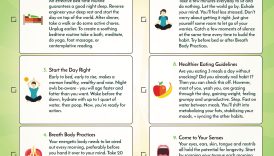Eco-Friendly Decor: Upcycling Tips for Shabby Chic Enthusiasts

Overview of Upcycling
Upcycling a concept often rooted in creativity, sustainability, and resourcefulness, has gained significant traction in recent years. It’s the process of transforming old, discarded items into something new and valuable, giving them a second life rather than tossing them into the landfill. For instance, consider an old wooden pallet; with a bit of effort, it can become a rustic coffee table or a stylish garden bench. Upcycling blends practicality with artistic expression, empowering individuals to create unique decor pieces that reflect their personality and values.
- Eco-Friendly Decor: Upcycling Tips for Shabby Chic Enthusiasts
- Overview of Upcycling
- Benefits of Eco-Friendly Decor
- Finding Inspiration
- Exploring Shabby Chic Styles
- Upcycling Materials to Look For
- Upcycling Furniture
- Painting Techniques
- Repurposing Vintage Pieces
- Upcycling Home Decor
- DIY Wall Art Ideas
- Creative Planters and Vases
- Sustainable Shopping
- Thrift Store Hunting
- Sustainable Material Choices
- Upcycling Tools and Techniques
- Essential Upcycling Tools
- Upcycling Safety Tips
Benefits of Eco-Friendly Decor
Adopting eco-friendly decor practices, including upcycling, holds numerous benefits. Not only does it minimize waste, but it also fosters a deeper connection to one’s living space. Here are some key advantages of embracing eco-friendly decor:
- Environmental Impact: Reduces the amount of waste in landfills and lowers carbon emissions associated with manufacturing new products.
- Cost-Effective: Upcycled items can often be made at little to no cost, enabling people to decorate their homes without breaking the bank.
- Personalization: Upcycling allows for creativity, resulting in one-of-a-kind pieces that cannot be found in conventional stores.
- Community Engagement: Many upcyclers participate in local swap meets or workshops, fostering a sense of community and shared purpose among like-minded individuals.
By venturing into the charming world of upcycling, individuals not only beautify their homes but also contribute to a more sustainable and eco-conscious future.
Finding Inspiration
Exploring Shabby Chic Styles
Finding inspiration for upcycling projects can often lead one down a delightful rabbit hole of creativity, especially when exploring the charming aesthetic of shabby chic styles. This trend combines vintage elements with a soft, romantic vibe that exudes warmth and character. Picture charming pastels, floral patterns, and distressed finishes all seamlessly woven together. One of the best ways to embody shabby chic in your upcycled projects is by infusing that cozy elegance into your designs. For example, an old dresser can be transformed into a chic statement piece with some pastel paint and vintage drawer pulls. A few key elements to consider when embracing this style include:
- Natural Textures: Incorporating burlap, lace, or linen can heighten the shabby chic appeal.
- Weathered Finishes: Distressing techniques on wood add depth and character.
- Whimsical Accessories: Vintage mirrors, glass jars, and antique frames can serve as fantastic accents, bringing the entire look together.
Upcycling Materials to Look For
Once inspired by the shabby chic style, the next step is to gather materials that are ripe for upcycling. It’s about being resourceful and imaginative; here are some common finds to keep an eye out for:
- Old Furniture: Dressers, chairs, or tables that may need a bit of TLC can serve as the perfect foundation.
- Glass Containers: Jars and bottles can be transformed into stunning vases or organizers.
- Wood Pallets: Versatile and sturdy, they can be converted into furniture, wall art, or garden decor.
- Textiles: Old curtains, linens, or clothing can be repurposed into cushion covers, quilts, or decorative throws.
As one navigates local thrift stores or garage sales, these materials can spark joy and set the stage for endless creativity. Upcycling not only provides an opportunity to create something useful but also helps to tell a story through each repurposed item.
Upcycling Furniture
Painting Techniques
Once you’ve gathered your materials, it’s time to dive into the exciting world of upcycling furniture! One of the simplest yet most transformative ways to refresh a piece is through creative painting techniques. Whether you’re working with an old chair, a wooden table, or a dresser, the right paint can breathe new life into your furniture. Here are a few popular painting methods to consider:
- Chalk Paint: This creates a matte finish that’s perfect for that vintage charm. Plus, it requires little prep work and adheres well to most surfaces.
- Distressing: After painting, gently sand select areas of your piece to expose some of the underlying wood and give it a time-worn look.
- Stenciling: Use stencils to add patterns or designs, giving your furniture a unique touch that showcases your style.
- Ombre Effects: Gradually blend different paint shades for a stunning, gradient effect that can be both chic and trendy.
Every stroke of paint can make a significant difference, and it’s a great way to channel your creativity!
Repurposing Vintage Pieces
Vintage furniture holds a special charm, often telling stories from a different era. Repurposing these treasures can both honor their history and make them functional for modern living. Imagine turning an old trunk into a coffee table or using an antique ladder as a unique bookshelf. Here are a few ideas to get the wheels turning:
- Nightstands from Old Dressers: A larger dresser can be transformed, with some drawers removed, into charming nightstands, providing both storage and a stylish surface.
- Suitcases into Storage: Vintage suitcases can be stacked or hung for chic and practical storage solutions.
- Old Chairs as Plant Stands: Turn a mismatched chair into a whimsical plant stand by placing a pot on the seat.
Upcycling vintage pieces isn’t just about aesthetics—it’s about creating functional art that adds character to any space, narrating a rich history while serving a new purpose in your home. By exploring these techniques, the possibilities are endless!
Upcycling Home Decor
DIY Wall Art Ideas
Now that the furniture has received a fresh look, let’s shift our focus to upcycling home decor, beginning with some inspiring DIY wall art ideas. Wall art is an excellent way to showcase creativity and personalize any space without the hefty price tag. With a bit of imagination, you can transform everyday items into stunning focal points. Here are some creative concepts to get you started:
- Framed Fabric Patterns: Repurpose fabric scraps or old garments by framing them in mismatched frames. The result can be a vibrant gallery wall that tells a story.
- Vinyl Records: Transform old vinyl records into unique wall art. Hang them individually or create a fun, retro display by grouping them together.
- Natural Elements: Use twigs, dried flowers, or leaves to create a nature-inspired display. Glue them onto a canvas or in a shadow box for a rustic touch.
- Quote Boards: Take an old wooden plank and paint inspirational quotes to give your space a motivational vibe.
These DIY wall art ideas not only enhance your home but also spark conversations and evoke fond memories.
Creative Planters and Vases
Next on our upcycled home decor journey is the art of creating beautiful planters and vases. This area allows for endless creativity and breathes life into any room. Upcycling common household items into functional decor can also nurture the green thumb in you! Here are some innovative suggestions for upcycled planters and vases:
- Tea Cups and Saucers: Use mismatched or chipped tea cups as charming planters for small succulents or herbs.
- Mason Jars: Transform old jars into elegant vases. For an extra touch, wrap some twine around the neck and add a few wildflowers for a rustic appeal.
- Tin Cans: After removing labels and giving them a good clean, tin cans can become playful planters. Paint them in vibrant colors or cover them with fabric for a more personalized look.
- Wooden Crates: Stack or hang wooden crates to create a vertical garden or use them as a unique display for larger plants.
These creative planters and vases offer functional beauty, showcasing your personal touch in every corner of your home. The combination of upcycling and nature fosters a connection to the environment while filling your space with cheer!
Sustainable Shopping
Thrift Store Hunting
Now that you’ve embraced the art of upcycling in your home decor, let’s dive into the world of sustainable shopping, starting with thrift store hunting. Thrift stores are treasure troves just waiting to be explored, offering an array of items at budget-friendly prices while promoting sustainability. One of the joys of thrift store shopping is the thrill of discovery. You might walk in looking for one thing and walk out with unexpected finds! Here are some tips for a successful thrift store adventure:
- Visit Regularly: Inventory changes frequently, so popping in regularly increases your chances of finding hidden gems.
- Keep an Open Mind: An item might not look perfect at first glance, but with a little creativity and effort, it could transform beautifully.
- Check Every Aisle: Don’t limit yourself just to home decor; check the clothing, kitchenware, and even books sections for upcycling potential.
- Ask for Discounts: Sometimes, stores have sales or special promotions that can help you snag that must-have item at a reduced price.
Your future living space could be enriched with unique pieces while keeping waste out of landfills!
Sustainable Material Choices
In conjunction with thrift store finds, being mindful of sustainable material choices is essential when upcycling. Opting for environmentally friendly or reclaimed materials not only reduces your ecological footprint but also adds character to your projects. Here are some great materials to consider:
- Reclaimed Wood: Perfect for building furniture! It typically comes from old barn wood or pallets, offering rustic beauty.
- Eco-Friendly Paints: Use paints with low VOCs (volatile organic compounds) to maintain healthier indoor air quality.
- Biodegradable Fabrics: When crafting textile projects, consider organic cotton, linen, or recycled materials that won’t contribute to landfill waste.
- Natural Adhesives: For bonding materials, look for plant-based options over synthetic alternatives, ensuring a more environmentally friendly approach.
By combining thrift store hunting with sustainable material choices, every shopping trip becomes an opportunity to create beautiful, eco-friendly pieces. Not only are you decorating with intention, but you’re also fostering a sustainable lifestyle that benefits the planet!
Upcycling Tools and Techniques
Essential Upcycling Tools
As you embark on your upcycling journey, having the right tools can significantly enhance your experience and improve your results. Whether you’re painting, assembling, or crafting, a well-equipped workspace fosters creativity and efficiency. Here are some essential tools every upcycler should consider:
- Basic Hand Tools: A hammer, screwdriver set, and pliers are fundamental for any upcycling project, perfect for assembling pieces or making necessary adjustments.
- Power Tools: A drill is invaluable for adding or removing hardware; a jigsaw can help in efficiently cutting shapes from wooden materials.
- Paint Supplies: Brushes, rollers, and spray paint cans allow for a variety of finishes, while drop cloths protect your work area from paint splatters.
- Measuring Tools: A tape measure and a level will ensure that your projects are precise, especially if you’re building furniture or hanging artwork.
- Safety Gear: Don’t forget safety goggles, gloves, and a dust mask to protect yourself during the DIY process!
With these tools on hand, you’re well-equipped to tackle any upcycling project that comes your way.
Upcycling Safety Tips
While upcycling is an enjoyable and creative endeavor, it’s essential to take safety seriously. Here are some tips to ensure that your crafting experience remains positive and safe:
- Ventilation: Always work in well-ventilated areas, especially when painting or using adhesives, to avoid inhaling harmful fumes.
- Proper Lifting Techniques: When moving heavy items like furniture, lift with your legs, not your back, to prevent injury.
- Be Mindful of Sharp Objects: Keep blades, scissors, and any sharp tools away from the edge of your workspace and properly store them when not in use.
- Read Labels: Familiarize yourself with product labels for safety warnings and proper usage instructions, particularly on paints and adhesives.
By equipping yourself with the right tools and adhering to these safety tips, you can ensure a smoother, safer upcycling journey. It’s all about being prepared so that you can unleash your creativity while enjoying the process!





